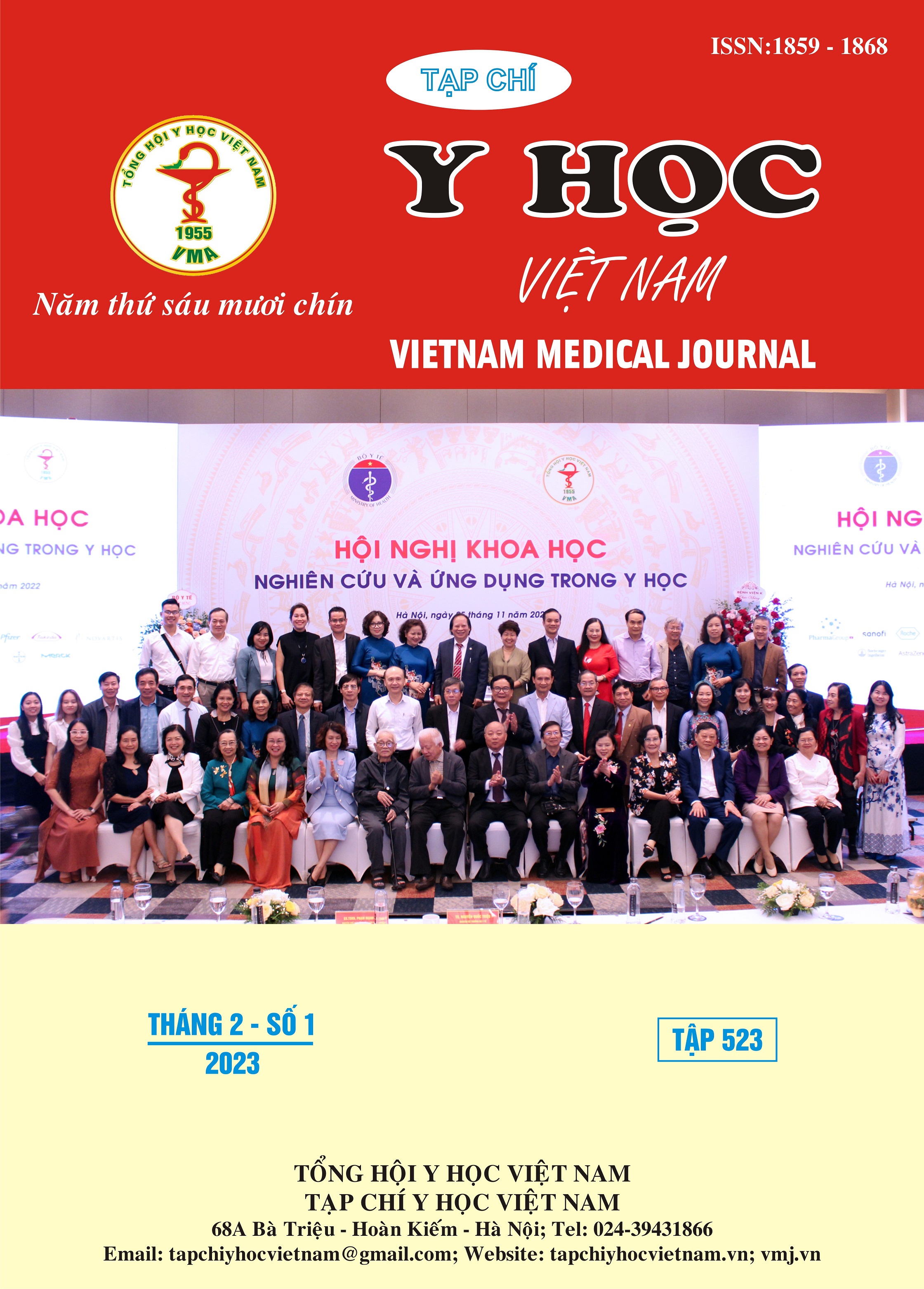RESULT OF MODIFIED ABRAMSON TECHNIQUE FOR PECTUS CARINATUM AT VIETDUC UNIVERSITY HOSPITAL
Main Article Content
Abstract
Objective: To evaluate the early results of pectus carinatum correction by modified Abramson technique at Vietduc University Hospital in the period of 2017-2021. Methods: A retrospective, cross-sectional descriptive study with all cases diagnosed with congenital pectus carinatum operated at Vietduc University Hospital from January 2017 to December 2021. Results: 45 patients, 41 men and 4 women included. Mean age 13.4 ± 1.4. All patients had aesthetic complaints, 9 patients with dyspnea on exertion (20%). There were 29 cases of symmetric pectus carinatum (64%), 13 cases of asymmetrical pectus carinatum (29%), 3 cases of pectus carinatum combined with pectus excavatum (7%). All patients were placed 1 bar, fixed both lateral with steel wire. The mean operative time was 40.27 ± 13.79 minutes (22 to 100 minutes). 100% of patients did not require chest tube. The average hospital stay was 5.24 ± 1.21 days (4 to 10 days). Out of 45 patients with bar placement, 37 patients had re-operated to remove the bar. After 6 months of placing the bar, the clinical results very good and good after surgery according to Abramson accounts for a high rate (81.82%). Conclusion: Modified Abramson technique is a minimally invasive technique for pectus carinatum patients with short operative time, short hospital stay and good result.
Article Details
Keywords
pectus carinatum, modified Abramson technique, minimally invasive technique
References
2. Fonkalsrud EW. Surgical Management of Pectus Carinatum. Operative Techniques in Thoracic and Cardiovascular Surgery. 2000;5(2):110-117. doi:10.1053/otct.2000.7028
3. Shamberger R. C. (2010), “Congenital Chest Wall Deformities”, Sabiston & Spencer surgery of the chest, Pedro J. del Nido Frank W. Sellke, Scott J. Swanson, Editor, Saunders Elsevier, Philadelphia, pp. 363-365.
4. Park HJ, Kim KS. The sandwich technique for repair of pectus carinatum and excavatum/carinatum complex. Ann Cardiothorac Surg. 2016;5(5):434-439. doi:10.21037/acs.2016.08.04
5. Katrancioglu O, Akkas Y, Karadayi S, Sahin E, Kaptanoğlu M. Is the Abramson technique effective in pectus carinatum repair? Asian Journal of Surgery. 2018;41(1):73-76. doi:10.1016/j.asjsur.2016.09.008
6. Abramson H, D’Agostino J, Wuscovi S. A 5-year experience with a minimally invasive technique for pectus carinatum repair. Journal of Pediatric Surgery. 2009;44(1):118-124. doi:10.1016/j.jpedsurg.2008.10.020
7. Zhang X, Hu F, Bi R, Wang L, Jiang L. Minimally invasive repair of pectus carinatum with a new steel bar. Journal of Thoracic Disease. 2022;14(8). doi:10.21037/jtd-22-189
8. Yuksel M, Lacin T, Ermerak NO, Sirzai EY, Sayan B. Minimally Invasive Repair of Pectus Carinatum. Ann Thorac Surg. 2018;105(3):915-923. doi:10.1016/j.athoracsur.2017.10.003
9. Suh JW, Joo S, Lee GD, Haam SJ, Lee S. Minimally Invasive Repair of Pectus Carinatum in Patients Unsuited to Bracing Therapy. Korean J Thorac Cardiovasc Surg. 2016;49(2):92-98. doi:10.5090/kjtcs.2016.49.2.92


